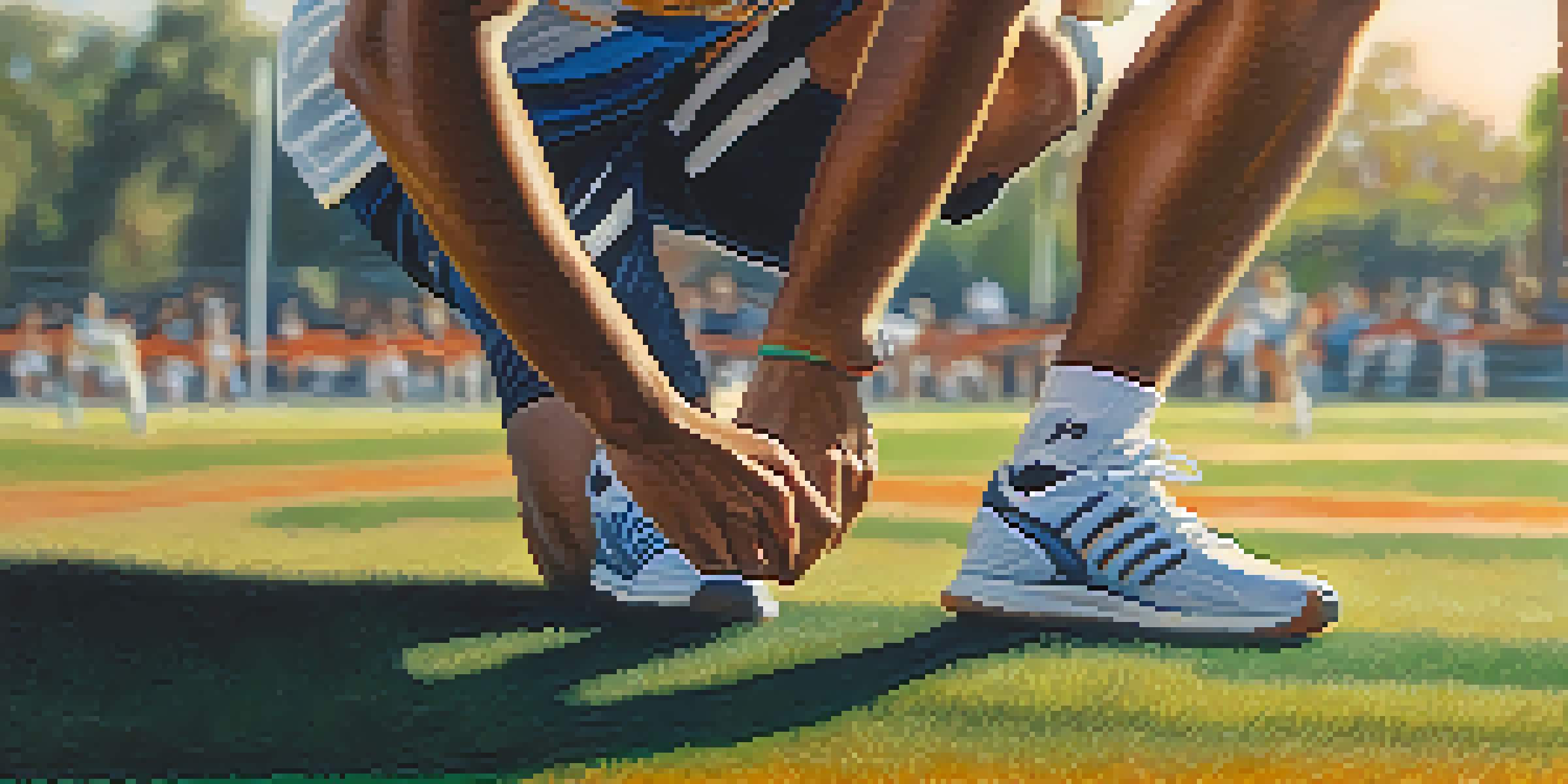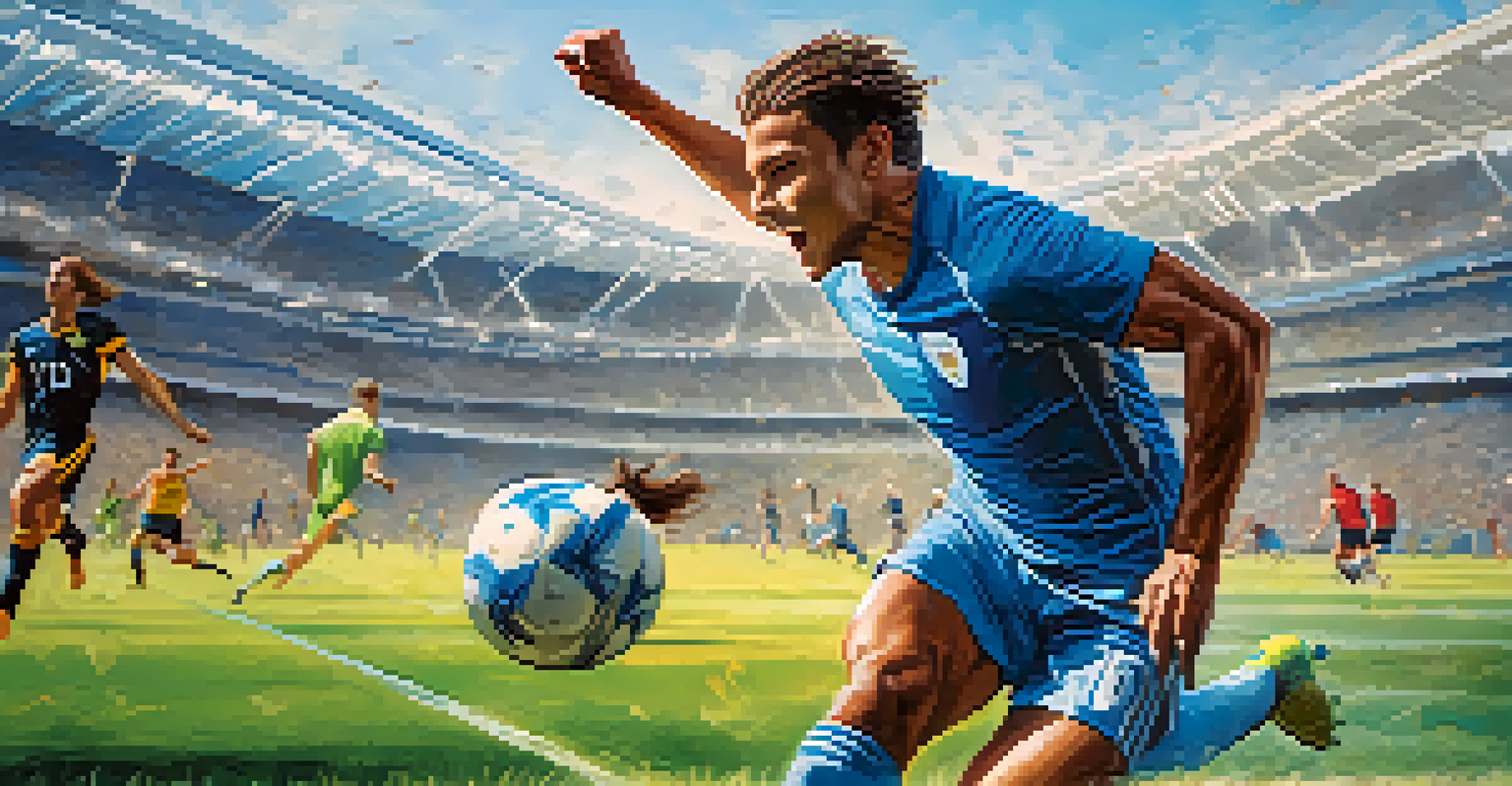Understanding Groin Injuries: Prevention and Treatment Options

What Are Groin Injuries and Why Do They Occur?
Groin injuries are common among athletes and can happen during high-intensity activities. They usually involve strains to the adductor muscles located in the inner thigh. Understanding the mechanics of these injuries can help you recognize the signs early and take preventive measures.
The body achieves what the mind believes.
These injuries often occur due to sudden movements like sprinting, jumping, or changing direction quickly. They can also result from overuse or inadequate warm-ups. By being aware of the activities that put you at risk, you can take steps to reduce the chances of injury.
Injuries can range from mild strains to more severe tears, which may require longer recovery times. It's essential to listen to your body and address any discomfort promptly. The sooner you acknowledge a potential issue, the easier it may be to manage.
Common Symptoms of Groin Injuries to Watch For
Recognizing the symptoms of a groin injury can make a significant difference in recovery. Common signs include pain in the inner thigh, swelling, and difficulty walking or running. You might also feel tightness or a pulling sensation in the groin area during physical activity.

In some cases, there may be bruising or tenderness when you touch the affected area. It's essential to differentiate between mild discomfort and more severe pain that may indicate a serious injury. If you experience sharp pain or a popping sound, it's crucial to seek medical attention.
Understanding Groin Injuries
Groin injuries often occur during high-intensity activities due to sudden movements, overuse, or inadequate warm-ups.
Paying attention to these symptoms can help you determine the severity of the injury. If left untreated, minor issues can escalate into more significant problems. Early intervention can lead to more effective treatment options and a quicker return to activity.
Risk Factors That Increase Susceptibility to Groin Injuries
Several factors can increase your risk of experiencing a groin injury. These include participating in sports that require frequent changes in direction, such as soccer or basketball. Additionally, a lack of flexibility or strength in the hip and thigh muscles can contribute to instability.
In the middle of every difficulty lies opportunity.
Age and previous injuries also play a role; older athletes may have a higher likelihood of injuries due to decreased elasticity in muscles. Furthermore, inadequate warm-up routines or poor conditioning can lead to muscle fatigue, increasing the risk of strain.
Being aware of these risk factors can help you adjust your training regimen accordingly. Strengthening exercises, flexibility training, and proper warm-ups can significantly reduce your chances of injury. Taking proactive steps is key to staying injury-free.
Effective Prevention Strategies for Groin Injuries
Preventing groin injuries starts with a comprehensive warm-up routine. Incorporating dynamic stretches that target the hip and thigh muscles can prepare your body for physical activity. This may include leg swings, lunges, and hip circles to increase blood flow and flexibility.
Strength training is equally important; focus on exercises that build strength in the adductor and hip flexor muscles. Activities like squats, lunges, and resistance band exercises can help enhance muscle stability. A balanced approach to strength and flexibility can create a solid foundation for athletic performance.
Recognizing Injury Symptoms
Common symptoms of groin injuries include inner thigh pain, swelling, and difficulty walking or running.
Lastly, listen to your body and recognize when you need rest. Overtraining can lead to fatigue and increased injury risk. Prioritizing recovery and making adjustments to your training plan can keep you healthy and active.
Initial Treatment Steps for Groin Injuries
If you suspect a groin injury, the first step is to follow the R.I.C.E. method: Rest, Ice, Compression, and Elevation. Resting the affected area is crucial to prevent further damage. Applying ice can help reduce swelling and alleviate pain, while compression wraps can offer support.
Elevation of the injured area above heart level can also assist in minimizing swelling. It's important to avoid activities that exacerbate the pain during this period. Taking these initial steps can set the stage for a smoother recovery process.
While self-care is essential, don’t hesitate to consult a healthcare professional if symptoms persist. They can provide a proper diagnosis and recommend a tailored treatment plan. Early intervention can pave the way for a quicker return to your regular activities.
Rehabilitation Techniques for Groin Injury Recovery
Rehabilitation is a critical part of recovering from a groin injury. Once the initial pain and swelling subside, a physical therapist can guide you through specific exercises to restore strength and flexibility. This may include targeted stretches and gradual strength training to rebuild muscle function.
Therapeutic modalities such as ultrasound or electrical stimulation may also be used to promote healing. These techniques can reduce pain and improve circulation in the affected area. The goal is to ensure that your muscles regain their full range of motion and strength.
Effective Injury Prevention Tips
Incorporating dynamic warm-ups, strength training, and listening to your body can significantly reduce the risk of groin injuries.
Consistency is key in rehabilitation; sticking to your prescribed exercises will help you recover effectively. Remember, rushing back into activities too soon can increase your risk of re-injury. Patience and diligence will pay off in the long run.
When to Seek Professional Help for Groin Injuries
Knowing when to seek professional help is crucial for effective recovery. If you experience severe pain, inability to walk, or persistent swelling, it’s time to consult a healthcare professional. They can assess the injury and help determine the best course of action.
Additionally, if you find that home treatment methods like rest and ice aren’t improving your condition after a few days, don’t hesitate to reach out for help. A healthcare provider can offer a more comprehensive evaluation and may recommend imaging tests, such as an MRI, to assess the extent of the injury.

Ultimately, prioritizing your health and well-being is vital. Early medical intervention can lead to more effective treatments and a quicker return to your favorite activities. Don't hesitate to ask for help when you need it!